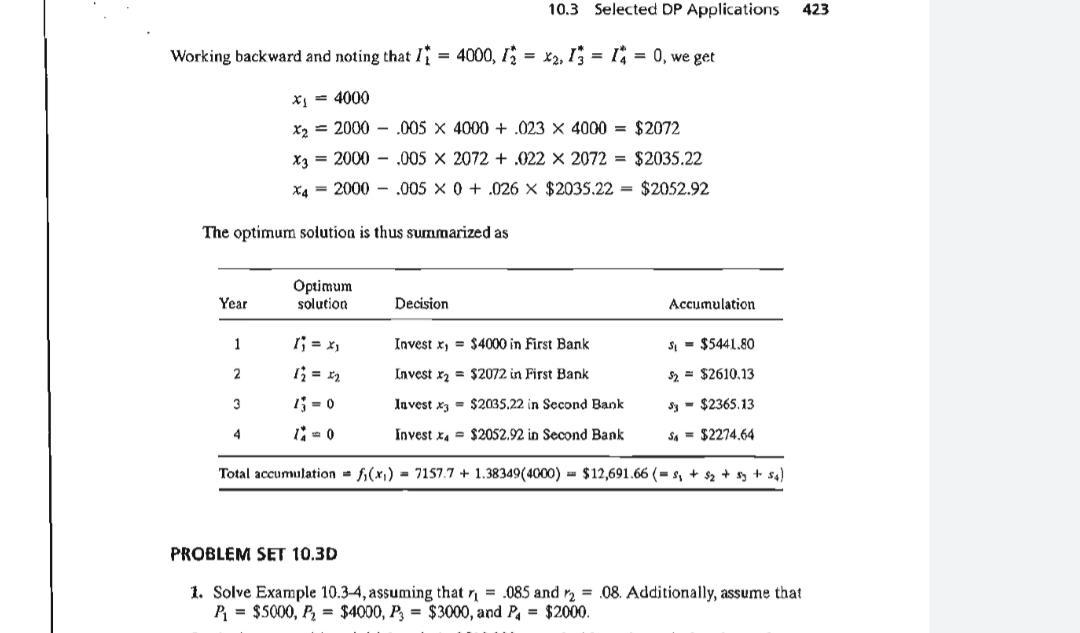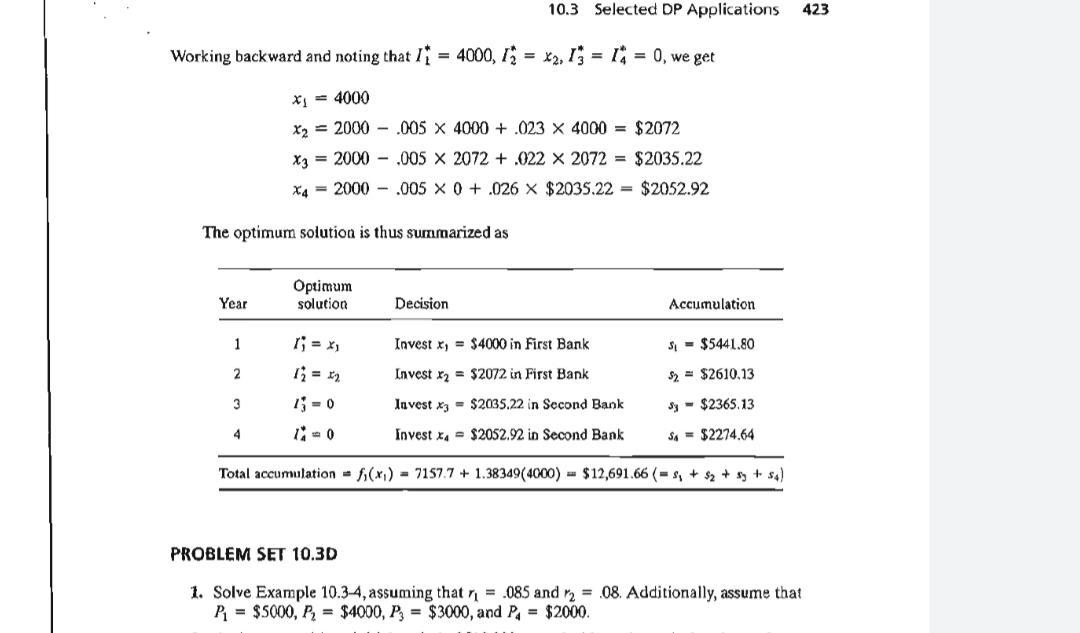Answered step by step
Verified Expert Solution
Question
1 Approved Answer
Solve by assuming that r1=.085 and r2= .08. Additionally, assume that PI= $5000, Pz= $4000, P3=:$3000, and P4= $2000. 10.3 Selected DP Applications 423 Working
Solve by assuming that r1=.085 and r2= .08. Additionally, assume that PI= $5000, Pz= $4000, P3=:$3000, and P4= $2000. 


10.3 Selected DP Applications 423 Working backward and noting that I = 4000, I = x2, I3 = 1 = 0, we get X1 = 4000 x, = 2000 - .005 x 4000 + .023 x 4000 = $2072 x3 = 2000 - .005 X 2072 + .022 x 2072 = $2035.22 X4 = 2000 - .005 X 0 + .026 x $2035.22 = $2052.92 The optimum solution is thus summarized as Optimum solution Year Decision Accumulation 1 1; = x, Invest x, = $4000 in First Bank S - $5441.8O 2 Invest x = $2072 in First Bank S2 = $2610.13 3 1 = 0 lavest x - $2035.22 in Second Bank Sy - $2365.13 4 Invest xa = $2052.92 in Second Bank S4 = $2274.64 Total accumulation f(x,) 7157.7 + 1.38349(4000) $12,691.66 (- s, + 2 + sy + s4) PROBLEM SET 10.3D 1. Solve Example 10.3-4, assuming that .085 and 2 = 08. Additionally, assume that P = $5000, P, = $4000, P, = $3000, and Pa = $2000.
Step by Step Solution
★★★★★
3.35 Rating (155 Votes )
There are 3 Steps involved in it
Step: 1

Get Instant Access to Expert-Tailored Solutions
See step-by-step solutions with expert insights and AI powered tools for academic success
Step: 2

Step: 3

Ace Your Homework with AI
Get the answers you need in no time with our AI-driven, step-by-step assistance
Get Started


